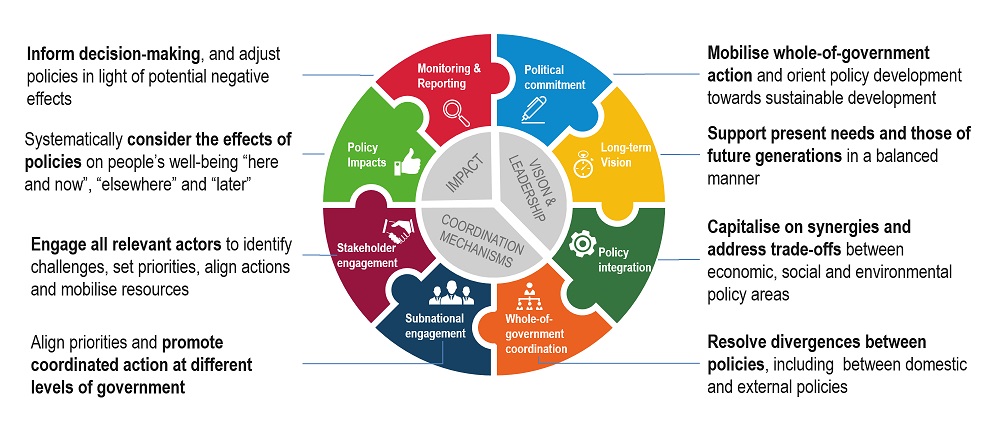The self-assessment tool
This interactive self-assessment tool enables policy-makers, practitioners and stakeholders to review their institutional mechanisms, organisational structures and policy-making processes against internationally recognised good practices on Policy Coherence for Sustainable Development, as outlined in the OECD Recommendation on Policy Coherence for Sustainable Development. It is designed to stimulate dialogue by helping users to identify strengths, gaps and weaknesses as a first step towards improvement.
Go to the Self-Assessment Tool

The OECD can accompany the self-assessment
The PCSD self-assessment is not a substitute for a review of the policy coherence system of a country. The self-assessment should be complemented by an external assessment and peer review. The OECD can carry out the external assessment and peer review, provide training and facilitate multi-stakeholder workshops on PCSD as well as the dissemination of the results.
The PCSD self-assessment should ideally be conducted by the existing lead governmental institution or body responsible for coordinating the implementation of the SDGs. To ensure the highest impact, the self-assessment could be organised through a workshop involving stakeholders from across the government and from civil society, academia and the private sector. To ensure the neutrality of the process, the OECD can act as independent and neutral facilitator, bringing in peers from other countries if appropriate, and work with the lead institution to guide all stakeholders during the workshop towards a clear understanding of the principles of PCSD and the different sets of questions and the score system before and during the self-assessment.
The self assessment exercise can also support country efforts for collecting information and facilitating consulations across the public administration to report on SDG indicator 17.14.1 measuring the “number of countries with mechanisms in place to enhance policy coherence of sustainable development”. The check-list is aligned with the eight domains covered by the methodology developed by the UN Environment as a custodian agency for the global indicator.

